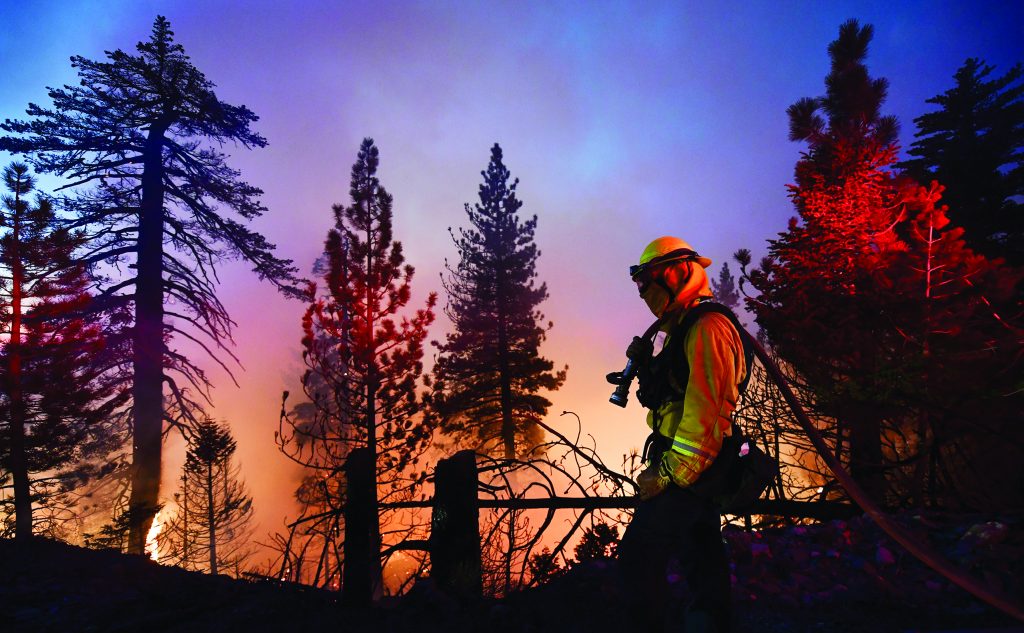
LOS ANGELES: Deadly blazes raging across the western United States have again destroyed thousands of homes nestled in forested areas this year -- with months of the fire season still to come in a region perilously exposed to climate change. With many insurers now refusing or charging exorbitant rates to cover at-risk houses, some homeowners are questioning what the future holds for their exhausted communities.
Populations of settlements built on the forested margins of cities -- officially known as the wildland-urban interface (WUI) -- have exploded in recent decades, and now total some 50 million households. One example is Paradise, a town bordering Northern California's national forests which was devastated by the state's deadliest modern-day fire in 2018. Rebuilding from the inferno that claimed 86 lives had not even finished when it was threatened by another fire burning in a neighboring town this month.
Despite the inherent risk of living in settlements like Paradise, the idea of evicting citizens "is the last solution residents want to resort to and policymakers want to resort to, because it's so dramatic and so costly," said Gregory Pierce, of University of California Los Angeles. "But for some communities, it's the only answer for survival," the urban planning professor told AFP.
'Out in the wilderness'
So far this year, some 6,500 structures have been destroyed in California alone, according to CalFire, with massive devastation extending far into Oregon and Washington states up the Pacific coastline. But WUI housing has grown exponentially due to the region's "housing affordability crisis," said Pierce. California's real estate is among the nation's costliest, but it remains "cheaper to build new development in outlying areas than it is in core urban areas," he added.
WUI housing boomed nationwide from 1990 to 2010, both in number of new homes (41 percent) and land area used (33 percent), according to the US Forest Service. "We have communities that are building around canyons that have brush, that are tough (to access)," said Darrell Robert, a 20-year-old firefighter in Southern California. "I mean, everybody wants that beautiful home with the trees over the top and out in the wilderness -- we get that." But the risks are high, he added.
Prescribed fires
There are many factors behind California's record fires. Besides overpopulation of the WUI, years of drought worsened by climate change have left endless acres of excess, dry vegetation. For President Donald Trump, a climate change skeptic, poor forest management is the leading culprit. One management tactic is to deliberately light "prescribed fires" that remove the fuel that feeds wildfires in a controlled way.
"Plans and practices like that can be very successful, but it's very, very difficult to do today because of the fact that there is a lot of people living out there," said David Shew, a retired California fire chief. "Can you guarantee that it's not going to escape its control and burn down somebody's house?" Shew agreed that evicting inhabitants would be a radical solution. And simply banning construction -- as is done in flood-prone parts of the Mississippi Delta -- is also problematic, because it is "much harder to predict" precisely which areas will burn.
Incentives
Another alternative would be to shift new housing stock to less flammable materials, said Shew. Reinforced walls, windows and roofs built from highly fire-resistant products, and covered fireplaces, could even be applied to existing homes. The remodeling would be expensive, but could make the vital difference in surviving the next inferno, he added -- and besides, there is no other easy option.
"We'll never have enough fire engines to park in every driveway," said Shew. Insurance companies -- who have lost millions of dollars underwriting homes in fire zones, but are obliged to extend policies for 800,000 at-risk homes by California state law -- could financially incentivize customers to make modifications to their properties. "For people who are already living in harm's way, there aren't many options to get out without losing a big chunk of the value of your assets," said Amy Bach of NGO United Policyholders, which looks after the rights of insured homeowners. - AFP
.jpg)



